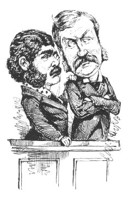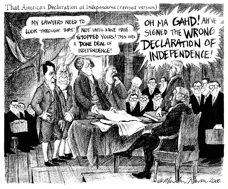Teamwork
From apse
A SPOKE IN THE WHEEL Back to
Working as a member of a team can be necessary to complete artistic ventures in a variety of mediums. Participating in a team can promote growth within the individual members and strengthen their ability for future team work. When done correctly a team will complete a task quicker and better than the individual.
Many projects require teamwork: the whole of the team creating a work that is greater than the sum of all parts.
Therefore:
A team needs to gel and the individual members need to have mutual respect and understanding. They are together to complete a task in an artistic venture. Since art is subjective relying on the individual’s tastes and agendas, working as a team on a creative project can be difficult. Does one detach them self from the project to ensure group unity? Does this sap the individuals’ passion from the project? How does one gage how much attachment they should invest in a group project?
All teams have a natural cycle. Stage one in this cycle is Forming: the team meets, sets goals, and tasks hammering out the details of what will follow. During this stage team members still think on a more individual basis the group hasn’t fully gelled yet, and on a hole are motivated and optimistic. The second stage is Storming a team in the Storming stage will have many competing ideas on how things should work. Team dynamics are developing and second-guessing begins. The team is questioning each others perspectives and how things should be done. Sometimes acting out may happen or team members will avert there focus from the main issues. This is the make it or break it phase of the team. The Norming stage is the third stage, let the gelling process begin. Team members have seen the worst of each other and survived now they adjust their behavior accordingly. Members learn to trust one another, in addition they also get more acquainted with their project. The Next stage is Performing. The team has gelled and can work as a unit. This is the stage in which the team shines and can really get things done. Though changes in the team dynamics may throw the team back into the Storming phase, at this point they are at the top of cohesiveness. The final stage is Mourning, this is the stage in which the team has completed their tasks and the team is disbanding.
People have been using teamwork to get essential tasks done since the beginning of conscious man. Prehistoric man hunted Mastodon, Giant Sloths, and Cave Bears in groups proving that when working as a team you can tackle a task that one could never accomplish. The Declaration of Independence is a prime example of a creative group venture that held the utmost importance to our burgeoning country. There were disagreements and later ratifications but it was a diverse team of men trying to create a more perfect union.
Gilbert and Sullivan were a creative team that worked together for over 25 years producing 14 operas. They had opposite outlooks and conflicting personalities. Gilbert and Sullivan both believed that their work was of a higher caliber than the others, but they knew that their combined work sold. Gilbert was the lyricist and Sullivan was the composer. They both provided half of what was needed for the whole in the musical equation. Though they didn’t like each other they knew to be successful they needed each other.
Rogers and Hart were a wining songwriting duo from the early 20th century. Rogers would write the music and then Hart the lyrics. Together they created 30 musicals and as a duo are considered as exemplary classic American song smiths. Hart eventually died and Rogers then teamed up with Oscar Hammerstein. Rogers and Hammerstein produced 9 musicals together Hammerstein wrote the lyrics and Rogers then music. Rogers proved that being able to work on a creative team is a transferable skill and that it improves over time. Rogers and Hammerstein won: thirty four Tony Awards, fifteen Academy Awards, two Grammy Awards, two Emmy Awards, and two Pulitzer Prizes.
Working on a team can be just as frustrating as it is rewarding so one must consider is it worth this? There needs to be give and take or at least an agreement between the parties as to whom will do what. If you are a continuing team either there is one person designated leader and then they trade off or there is an even distribution of power. Either way communication is key.
Each party must know what role they are taking or else there will be endless power struggles and nothing will be accomplished. There must be some give and take. For example, a team can deal with differences by trading off leader ship, “this time I will be in charge, while next time you can be.” A group can also decide on who leads based on the member that possesses the greater skill in individual tasks. When working on a team one has to be able to rely on ones partners. You must ask yourself: Are they in it for the long haul? Will they pull their load? Are they as committed as I am? Am I ok with what they specifically are willing to do or not do? Everyone has his or her own work style, some prefer working in chaos, while others need an organized and structured atmosphere. Are you compatible with your partners work style if not can you and are you willing to work around each other or is it just too much for what its worth? When working creatively there will be differences of opinion how do you deal with that? Sometimes one has to let go.
When working with others you have to carefully choose your battles. Just as you need to choose your battles, you have to go to bat for ideas too. Not speaking up will just build resentment and if you feel resentful you will be less productive. Resentments pile to create a hostile work environment. It is one’s own responsibility to express their opinion. When you attempt to tough it out you are short handing both you and your partner. By not saying your opinion you are preventing your partner form getting a feel of your true artistic personality, and your style. Once partners’ have tackled a difference of opinion they will be imbued with a sense of cohesiveness. The partners possess the knowledge their partnership can survive obstacles.
Sometimes differences wills sort themselves out sometimes not. When the creative differences persist you can negotiate, I’ll leave this in here if we take that out of there etc. Other times one must weigh which partner feels more strongly about a topic. You can be at level 5 in the importance scale on a matter while your partner can be a level 10, that’s when you just let go. It can be hard if both partners are particularly passionate about a topic, however there are solutions. One solution is to do your project both ways why not have a directors cut?, it is done in Hollywood all the time. Go outside of your team get a secondary opinion. They may not be as “experienced” as you but an outside opinion is always valuable. When looking for an outside opinion try to go to your targeted audience, thus killing two birds with one stone.
- * *
Work on a creative team to produce pieces that would be difficult for a single person to produce. Communication with your partners is key to having a successful venture. Expect that there will be times when you and your partners don’t get along but keep the lines of communication open and maintain a mutual respect.




